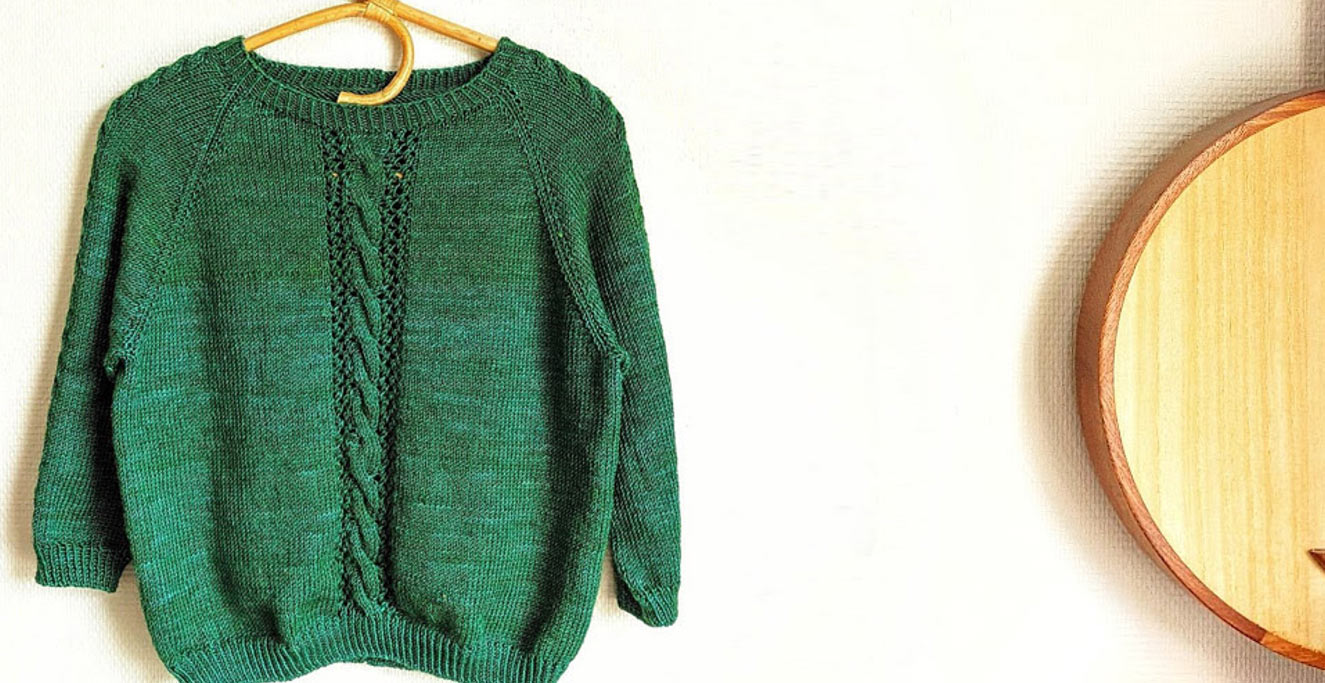
Stockinette is a basic stitch pattern used in all kinds of knitting projects. From a simple dishcloth to a stylish sweater, whatever you've got on your knitting needles, stockinette features in all types of knitting. If you are a beginner in knitting, then knowing how stockinette works is essential. Stockinette stitch, also known as Stocking Stitch in UK patterns and abbreviated in all patterns as "St st," is a simple pattern of knitting one row, purling the next, and then repeating this process consecutively.
Many knitting patterns don't even explain because they assume that a knitter knows how to knit the stockinette stitch. To help you understand better, we'll discuss everything about the stitch, including how to knit stockinette, in this blog. All you have to do is get your favorite knitting needles and yarn to get started.
What is Stockinette?
The "knit fabric" you find in most basic patterns of sweaters, hats, scarves, or any other type of handmade project is mostly all stockinette. In the front or the right side of the fabric, the stitches look like a series of V's, while the back or wrong side resembles rows of waved ridges. Alternatively, a reverse stockinette stitch works when the first row of purl stitches and the second row of knit stitches.
The stockinette stitch pattern has a "right" side and a "wrong" side. It is not reversible. The "right" side faces out, making the project's visual look with knit stitches that look like little V-shapes. The "wrong" side of the stitch pattern contains purl stitches that look like little bumps. The stitch is infamous for its tendency to curl. Some yarns show this tendency more than others, but this stitch structure is primarily responsible for it. To avoid this peril, blocking the knitted fabric helps to limit it, but the knit pattern tends to curl. Many knitters prefer to add a neat edge of the garter stitch or I-cord with a crochet hook or slip stitches if the project is flat. Many knitting projects use the curl as an advantage—for instance, edging sock cuffs and necklines or creating curled scarves.
As a fundamental knitting technique similar to garter stitch, the stockinette stitch likely emerged alongside knitting itself. Interestingly, the term "stockinette" for this stitch is relatively modern. The first written record appears in the 18th century and refers to the fabric produced by the stitch, not the stitch itself. Many believe "stockinette" is a shortened version of "stocking net" as the net is related to knit, and stockings were a major application of early knitting. Most importantly, the stockinette stitch creates a smooth, stretchy fabric that is perfect for them. The invention of the stocking frame in 1589, the first knitting machine, initially only produced stockinette fabric. This machine might have further solidified the association between stockings and the stitch.
Knitting Needles for Stockinette Stitch Pattern
Stockinette stitch works with any number of stitches, odd or even, and all types of knitting needles. You can work the stitch pattern with a pair of single-pointed for projects such as a scarf, dishcloth, blanket, or knit stockinette socks with double-pointed needles. Similarly, you can work with a fixed circular or an interchangeable circular for a sweater or a blanket. You can knit on projects with odd and even numbers of stitches if you follow the pattern.
Now, knitting stockinette stitch pattern back-and-forth differs from knitting in the round.
Knitting Stockinette Back and Forth

Stockinette stitch worked back and forth means alternating rows of knit and purl stitches. If you have cast stitches on a single-pointed needle or a circular knitting needle, for example, you will work on knit stitches for a row, then turn the project and work on a row of purl stitches until you've completed your project.
Knitting Stockinette in Rounds
When working in the round with circular knitting needles or DPNs the stitch structure calls for knitting every stitch of every round. There is no need to purl when working in rounds, as you do not change the direction of your knitting. This is useful for many reasons. Your projects turn up faster, and knitters who face uneven tension when making purl stitches are saved.
Versatile use for Stockinette Stitch
- Quick Knitting Projects - Once you've had some practice, it is very easy to knit stockinette stitch without even paying attention. Thus, making it a great stitch to tackle while watching TV or during travel or chatting up with your loved ones.
- Great to pair with Textural Stitches - Stockinette stitch is commonly used to frame cables and other advanced patterns. In fact, the highly textural patterns such as bobbles stand out beautifully from the flat background created by the stockinette stitch.
- Embellishment - Stockinette provides a great backdrop for embellishment. You can easily add colorful stripes to a project worked in stockinette stitch. If you want to explore colorwork, you can even add designs by making duplicate stitches with a finishing needle on top of an already knitted piece.
So, now you have all the information on the stockinette stitch, introduce it into your projects or design pieces with this one stitch. For your first projects, you can start with knitting a scarf or a blanket. hats are fun and quick and will give you ample opportunity to be a master knitter of stockinette stitch. Knitting stockinette with circular needles is surely a perfect way to explore the stitch pattern and work on your projects.
